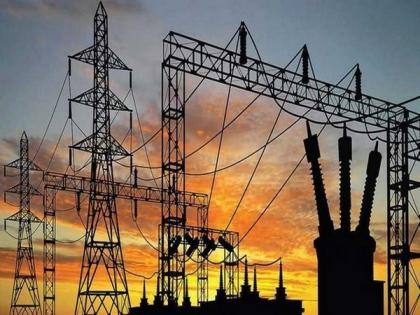Pak govt forecasts USD 72 bn investment needed to meet 50 pc surge in power demand
By ANI | Published: May 19, 2024 12:42 PM2024-05-19T12:42:46+5:302024-05-19T12:45:04+5:30
Islamabad [Pakistan], May 19 : In a comprehensive overview of Pakistan's energy landscape, the government anticipates a substantial increase ...

Pak govt forecasts USD 72 bn investment needed to meet 50 pc surge in power demand
Islamabad [Pakistan], May 19 : In a comprehensive overview of Pakistan's energy landscape, the government anticipates a substantial increase in electricity generation capacity, with a projected investment of USD 72 billion over the next decade. This forecast, outlined in the Indicative Generation Capacity Expansion Plan (IGCEP 2024-34) submitted to the National Electric Power Regulatory Authority (Nepra), aims to bolster the country's power infrastructure to meet escalating demand, Dawn reported.
Under the proposed plan, renewable energy sources are slated to account for a significant portion, with an expected surge to 46 per cent of the total energy mix within the next decade. This surge in capacity, estimated to rise from 42,000MW to 57,000MW, underscores the government's commitment to embracing sustainable energy solutions.
The National Transmission and Despatch Company (NTDC) has provided insights into the anticipated growth in electricity demand, projecting increases ranging from 46 per cent under a low-growth scenario to 74 per cent in a high-growth scenario over the next ten years. To accommodate this surge, an estimated investment of USD 62-64 billion would be required, reflecting the scale of the challenge at hand, as reported by Dawn.
The Transmission System Expansion Plan (TSEP 2024-34) outlines an additional USD 8.7 billion investment imperative for enhancing the transmission network. This allocation includes funds for both ongoing projects, requiring USD 3.2 billion for completion, and new projects necessitating USD 5.5 billion in funding.
Employing state-of-the-art generation planning software, PLEXOS, the least-cost, long-term generation expansion plan has been meticulously developed. This plan factors in existing and future generation projects, policy frameworks, contractual obligations, natural resource allocations, and prevailing Grid Code provisions. It adheres closely to the National Electricity Policy 2021 and incorporates a series of assumptions to guide strategic decision-making.
In crafting the base case scenario, NTDC has meticulously accounted for existing contractual obligations and projected retirements of power projects as stipulated in their respective Power Purchase Agreements (PPA), with the exception of KAPCO. The plan also factors in the retirement of 8,330MW of existing power generation capacity over the planning horizon.
The forecasted demand is calibrated to accommodate the intermittency of variable renewable energy resources such as wind and solar PV, critical elements in achieving the government's ambitious renewable energy targets. With an estimated 87,600 hours of energy and peak demand forecasted from FY24 to 34, the plan aims to balance the evolving energy landscape with a diversified and resilient energy mix.
By 2034, the envisioned energy mix will reflect a notable shift towards indigenous fuel sources, with local coal and renewables playing a prominent role. Hydropower is expected to contribute 46 per cent of the energy mix, accompanied by 10 per cent from variable renewable energy sources. The plan minimizes reliance on imported fuels, with RFO making no contribution and imported coal and RLNG accounting for a modest share of total energy requirements, Dawn reported.
Disclaimer: This post has been auto-published from an agency feed without any modifications to the text and has not been reviewed by an editor
Open in app